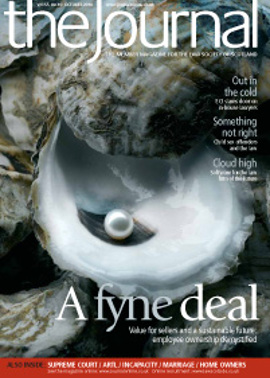Website review

Scotland’s judges now have their own website. The site has been universally welcomed, but I (continually on the lookout for Scottish legal websites to review) am the most pleased of all.
Judiciary of Scotland
First impressions first. The site is very well put together, easy to navigate and attractive. For a site with a prime objective of representing the judiciary to the general public, these three points are most important.
The site is divided into four main sections: Judgments & Sentences; Going to Court; About the Judiciary; and Media and Publications.
Judgments & Sentences
This section contains summaries of court opinions in cases of public interest. So far in 2010, there have been only three such cases (although I imagine that HMA v Sheridan may make an appearance in due course).
Similarly, there are summaries of selected fatal accident inquiries – at present only two FAIs have been so selected, one this year and one last year. In both sections, useful links to the full decisions are provided.
Finally, the site has a selection of sentencing statements (again in high-profile cases) which, at the time of writing, amounted to 25 since April 2010. As these are not generally otherwise available online, this is a particularly interesting and useful feature.
Going to Court
As the site is supposed to be about the judges rather than the court, this section feels like it belongs more naturally on the Scottish Court Service website (www.scotcourts. gov.uk). The information in this section is, as you might expect, very similar that that found in SCS’s section on “Coming to Court”. However, I felt that the judiciary’s version was better in design and layout, and was as a result easier to read. This is probably a function of the SCS site being older, rather than a problem with the information itself.
If there is a criticism of this section, it is that it tends towards being too earnest at times. Popular Scots blogger Lallands Peat Worrier (lallandspeatworrier.blogspot.com) has already described the information on “Addressing a Judge” as “amusingly elaborate” and commented on the “irresistibly blunt section on Court Room Etiquette which offers a few matey ‘tips’ about how to behave”.
About the Judiciary
There is a lot of interesting information to be found here as well. Great emphasis throughout is laid upon the principle of independence of the judiciary, newly enshrined in statute (s 1, Judiciary and Courts (Scotland) Act 2008). And, as if to underline the point, you’ll notice that the independent judiciary use a .org.uk SLD, whereas the Scottish Court Service (part of the Scottish Administration) is saddled with .gov.uk.
The site includes pen portraits and photographs of the Senators of the College of Justice and sheriffs principal, which range from the brief and strictly business style to the more wide-ranging “see we’re only human too” style, which lists sporting, music and gastronomic interests alongside professional achievements. Did you know, for example, that the Sheriff Principal of Glasgow and Strathkelvin likes jazz?
Media and Publications
This includes not only news, but also judicial speeches, publications (e.g. the Gill review) and responses to Government consultations. RSS feeds are available for the “News” and “Media Releases” updates.
You can also follow the judiciary (or rather, Elizabeth Cutting, head of judicial communications at the Judicial Office for Scotland) on twitter: @JudgesScotland.
So, overall, the site is very good, and probably long overdue. However, it wouldn’t be a proper web review without a few complaints …
There is a tendency to use the text “find out more” or “read more” as the text for internal links, which is not really very good practice. It violates the W3C accessibility guidelines and will be very annoying for blind visitors using audio browsers. I also think there is an overuse of italics, which makes the text in some places just a little bit more difficult to read.
However, the biggest complaint I noticed anywhere in response to the site was the spelling of the word “judgment/judgement”. The eagle-eyed among you will have noticed that the site adopts the spelling “judgment” throughout. Its glossary is emphatic on the point: “Judgment (Not judgement.)”. The SCS site uses the spelling “judgment” in its site architecture, but a quick Google search reveals that the spelling “judgement” is used at least 1,300 times in the content of the site (including within the text of a number of judicial opinions.
Looking further into the issue, it appears that the variant without the “e” is favoured in a legal context throughout the world. (Is this common knowledge? I don’t remember being taught it at law school.) Otherwise, in the UK “judgement” is preferred, and in the US “judgment”. So now you know.
Who writes this column?
The website review column is written by Iain A Nisbet of Govan Law Centre e: iain@absolvitor.com All of these links and hundreds more can be found at www.absolvitor.com . Absolvitor is also now on Facebook: http://bit.ly/absolvitor; and twitter: twitter.com/absolvitor
In this issue
- The Scottish Government's EU and International Law Branch
- Akzo-Nobel: what you need to know
- The Edinburgh Declaration
- The curtailment of criminal appeals to London
- Society, justice and the greater good
- "We've aye done it this way" – not now!
- A deal to buy in to
- Land Register: what next?
- Designed to appeal
- Perpetrator or victim?
- An orchestra of instruments
- Two by two, by two
- Added capacity
- D-Day for legal aid
- Law reform update
- Compliance and the consent regime
- From the Brussels office
- Paper, pixel and process
- Ask Ash
- Draft proof
- Time for a fresh look
- Where to draw the line
- Reviewing the review law
- Expensive business
- Taking the full impact
- No discrimination?
- Scottish Solicitors' Discipline Tribunal
- Website review
- Book reviews
- It's not good to talk
- Getting to know you






